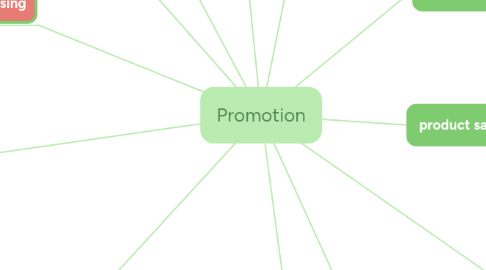Promotion
저자: Anna Monica Sakura Paguirigan


1. providing information
1.1. words/vision to make our product attractive
2. rewards program
2.1. increase amount and frequency use of our product
3. Advertising
3.1. builds solid brand for the company
3.2. how market perceives the company
3.3. mass-audience
4. Personal Selling
4.1. in-person interaction to sell products
4.2. reference selling: using positive experiences from a customer to target customers
4.3. retail selling: in-store employees can help customers with their specific needs
5. Sales Promotion
5.1. budget: how much you can invest on promoting
5.2. message: how will you make your product stand out?
5.3. target market: who are associated with your product (persona)
5.4. discounted products
5.5. free shipping/refunds
6. Digital/Social Media
6.1. meeting and interacting with your target audience where they are and your brand
6.2. engagement -> brand awareness
6.3. generate leads and conversions
6.3.1. create contests
6.3.2. links to websites and offers
6.4. learn from competitors
6.4.1. their social media tactics
6.4.2. what works/doesn't work for your competition
7. E-Commerce
7.1. using company's website to make sales
7.1.1. online shopping
7.1.2. interactive games
8. creating awareness
8.1. radio stations
8.2. slogans
8.3. social media platforms
8.4. advertisements (online/physical)
9. product samples
9.1. for existing and non-users
9.1.1. coupons
9.1.2. sample-sized product
9.2. by endorsers/celebrity
10. Direct Marketing
10.1. Social Media Marketing
10.2. Email Marketing
10.3. Internet Marketing
10.4. directed to customers and future events
11. Public Relations
11.1. create and maintain positive image and have a strong relationship with customers
11.2. customer relations: market research on customers' priorities, attitudes and thoughts and matching it with strategies we make
11.3. marketing communications: supporting marketing efforts
11.3.1. campaigns
